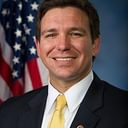
Thirty years after the crime that sent him to Pennsylvania’s death row and 15 years after his case was argued in the U.S. Supreme Court, David Sattazahn was resentenced to life without parole — the sentence he initially received in his first trial in 1991. Prosecutors, defense attorneys, and the victim’s family all agreed that a life sentence was the best outcome at this point in the case. Sattazahn was convicted of first-degree murder and the court sentenced him to life in prison in 1991 when his Berks County sentencing jury split 9 – 3 in favor of a life sentence. After his life sentence, Sattazahn pled guilty to several unrelated felony charges. His murder conviction was then overturned as a result of prejudicially inaccurate jury instructions, and in his retrial, prosecutors again sought the death penalty, using his guilty pleas as a new aggravating circumstance. In 1999, he was retried and sentenced to death, becoming the first death-after-life-sentenced defendant under Pennsylvania’s death penalty statute. His appeal in that trial reached the U.S. Supreme Court (argument, pictured), which ruled 5 – 4 in 2003 that the non-unanimous jury vote in his case did not constitute a finding rejecting the death penalty, even though it had resulted in a life sentence. As a consequence, the Court wrote, subjecting Sattazahn to a second capital prosecution did not violate the Double Jeopardy clause of the U.S. Constitution. Sattazahn’s 1999 death sentence was overturned in 2006 because of ineffective assistance of counsel. Faced with the possibility of a third sentencing hearing and additional appeals, the family of murder victim Richard Boyer, Sr. agreed that dropping the death penalty in favor of life without parole would help bring them closure. “Every time we try to get on with our lives, we’re back in court, reliving that night again and again. There has to be an end to this madness,” said Barbara Spatz, Boyer’s sister. Senior Deputy Attorney General Anthony Forray said his office consulted with Boyer’s four children and four siblings before deciding to drop the death penalty. “No family should have to go through this,” Forray said. “The commonwealth believes that what is occurring today is the appropriate thing to occur if this family is ever going to have closure and if this is ever going to come to an end.” At a May 24, 2017 hearing in Reading, Pennsylvania, the Berks County Court of Common Pleas formally resentenced Sattazahn to life.
(S. Weaver, “Sattazahn case takes twists and turns over the past 30 years,” The Reading Eagle, May 25, 2017; S. Weaver, “Prosecutors withdraw death penalty from Berks murder case,” The Reading Eagle, May 25, 2017.) Sketch of Supreme Court argument in Sattazahn v. Pennsylvania by Dana Verkouteren. See Arbitrariness and Victims.


